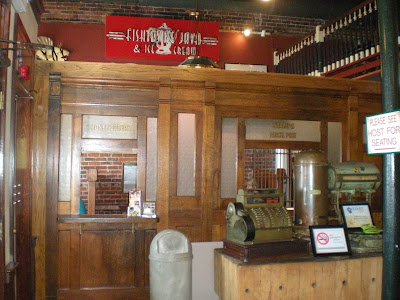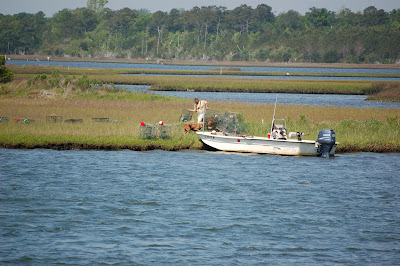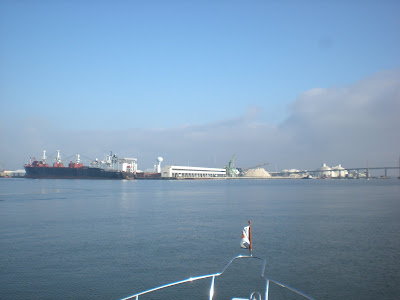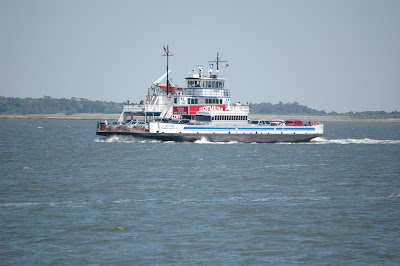We stayed at the Ocean Marina near the Olde Towne Portsmouth historic shopping and entertainment district (don't you love how they stick an "e" at the end to make the area sound more quaint and historic?). There was plenty to do and see within walking distance, so off we went, and once again our photos will tell the story.
Our view from the marina--more Navy. This was taken from the back of our boat looking across the Elizabeth River. The Norfolk skyline is on the left behind the ship.
We first arrived in Portsmouth on Friday, and on Saturday, there was an Arts & Crafts fair on the main street (High Street). We resisted temptation and didn't buy an object d'art for the boat, but had a lot of fun looking and stopping at the junk food stalls (almost as good/bad as a county fair).
That's Art on the right in the brown shirt and shorts.
And here I am on the phone (with one of the kids, no doubt) in front of historic Trinity Episcopal Church, erected in 1762 and originally the Portsmouth Parish of the Church of England.
This is a view of Norfolk from the ferry we took over. The ferry costs $1.50 each way, but was half price for us old duffers. We went over to go shopping and for Art to tour the USS Wisconsin (next photo).
Back in Portsmouth, this next photo is of a lightship--basically a portable lighthouse--now sitting on land as a museum exhibit. Typically, a lightship would anchor at a strategic location at sea and remain in one spot for months at a time helping mariners avoid dangerous shoals or to safely enter harbors at night. This particular ship served for 48 years off the coasts of Virginia, Delaware and Massachusetts.
When we got tired of being tourists, we headed back to the boat and met up with a few other friends in the marina for "docktails," which is turning out to be a pretty common activity when we tie up (oh, darn).
We are a rather scruffy looking group, wouldn't you say? But everyone has a drink in their hand!
This is the sunset right after a downpour in the marina on our last night in Portsmouth. Portsmouth is the gateway into the Chesapeake, so off we go--and that will be my next post.





















































